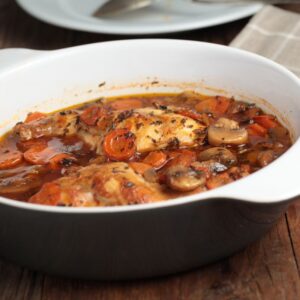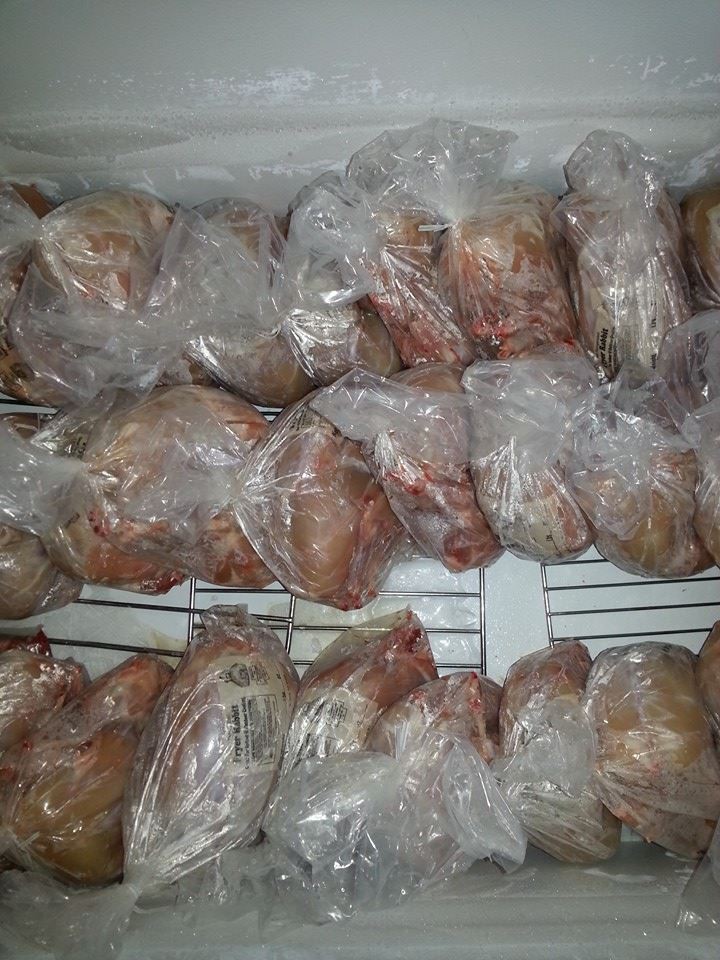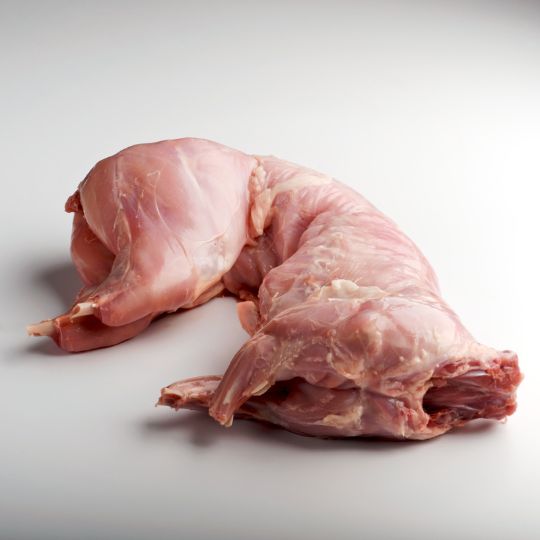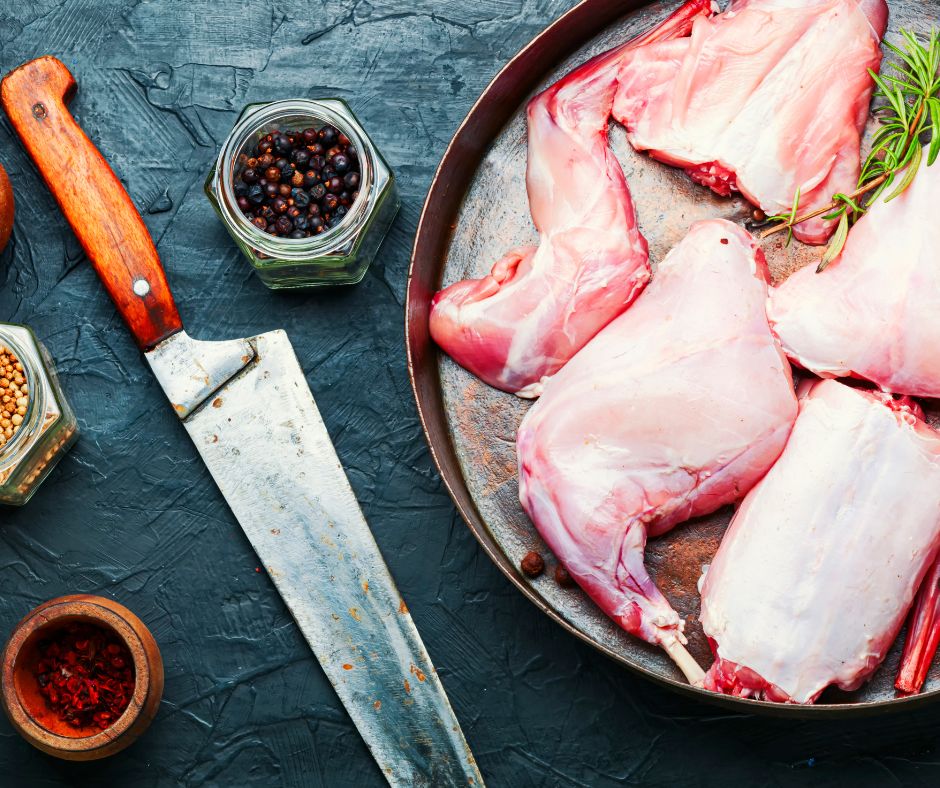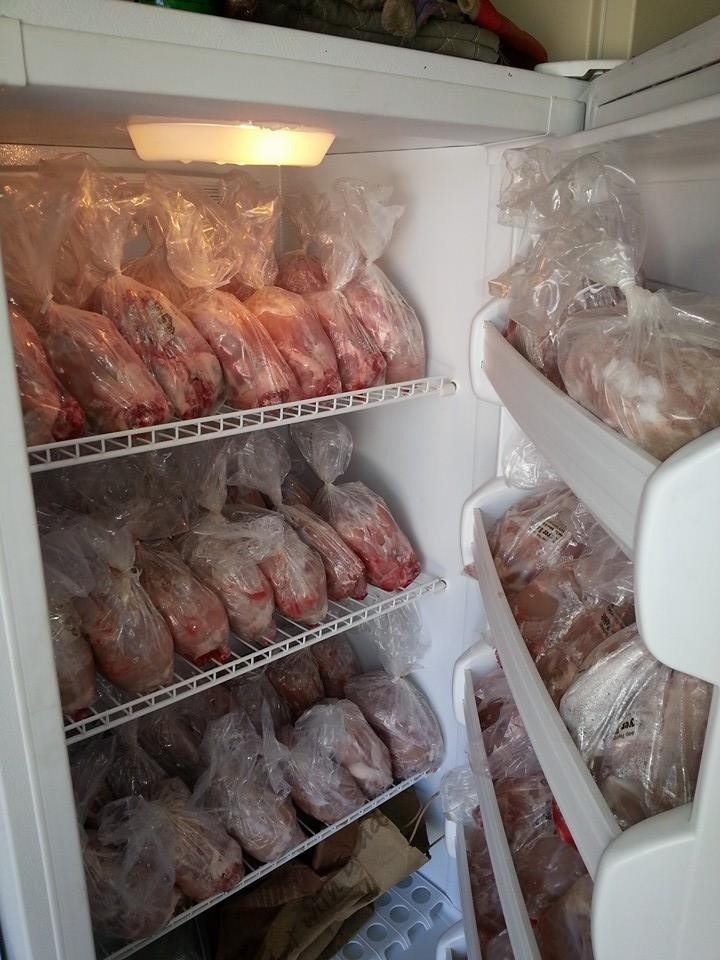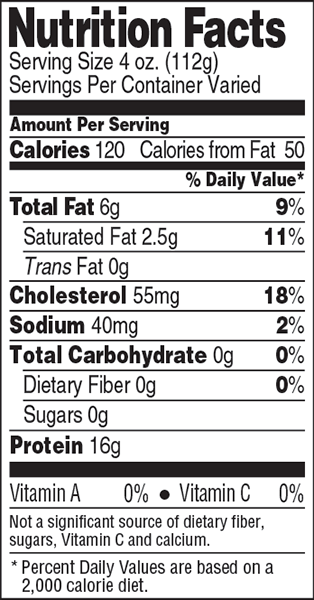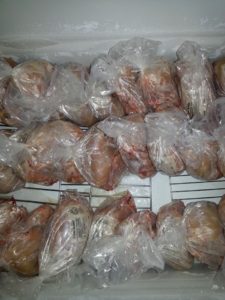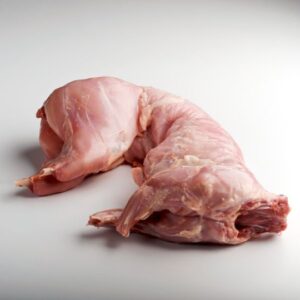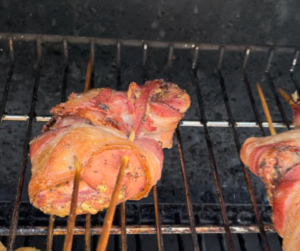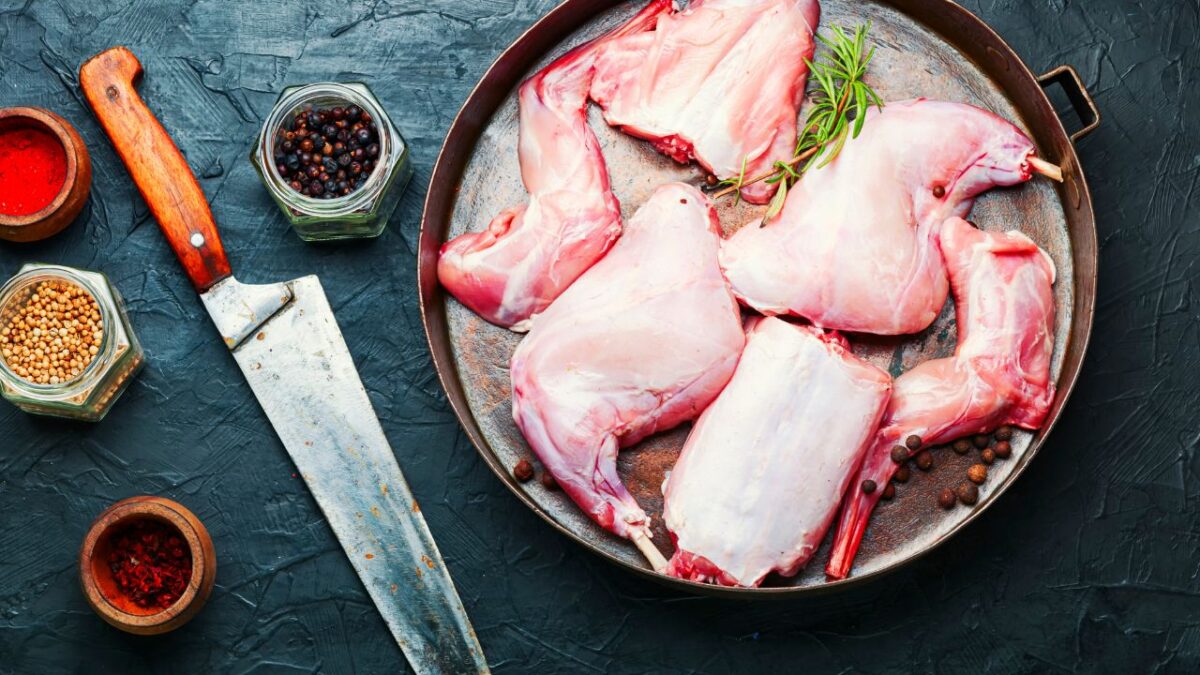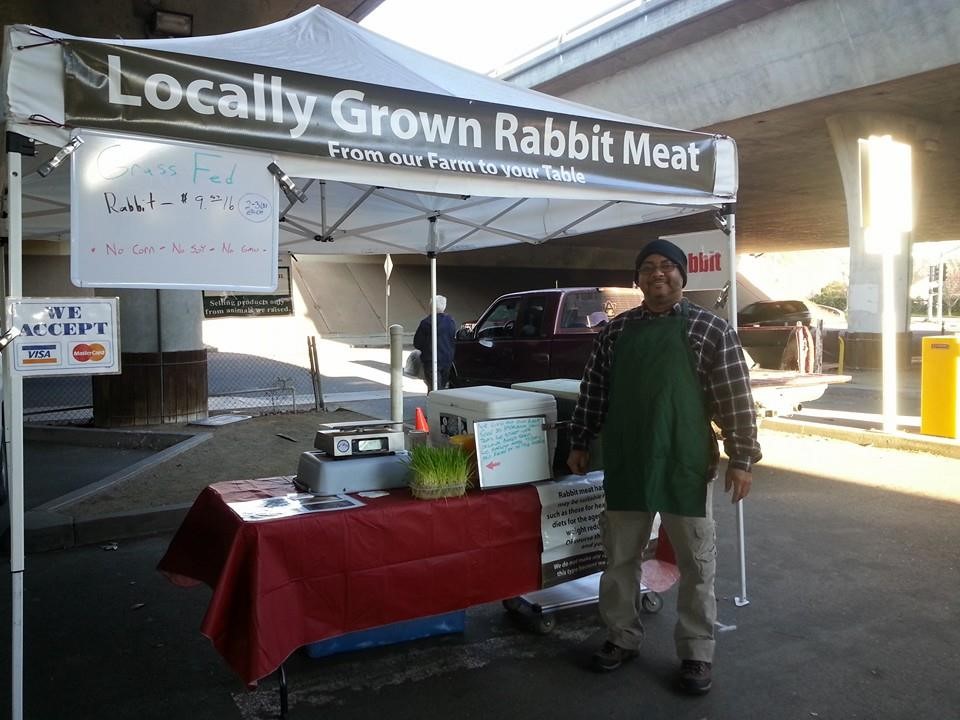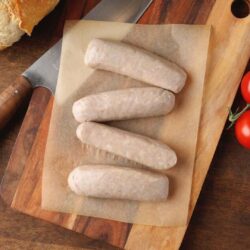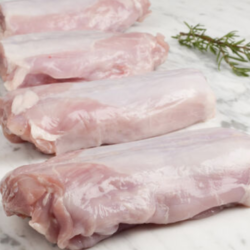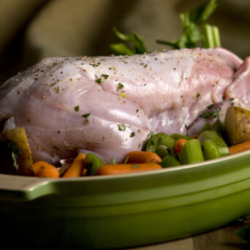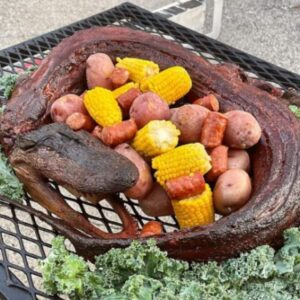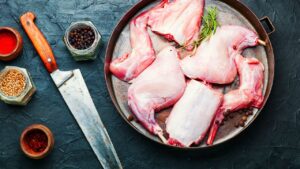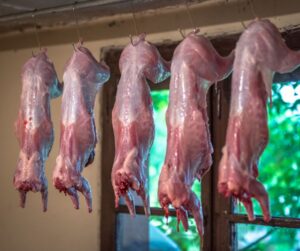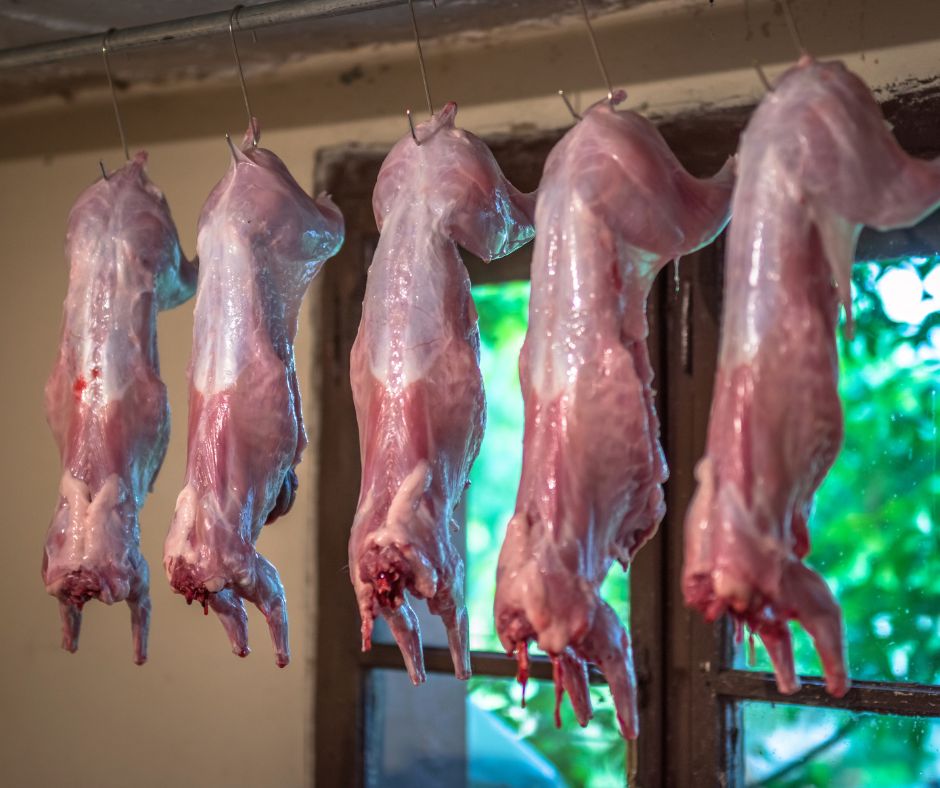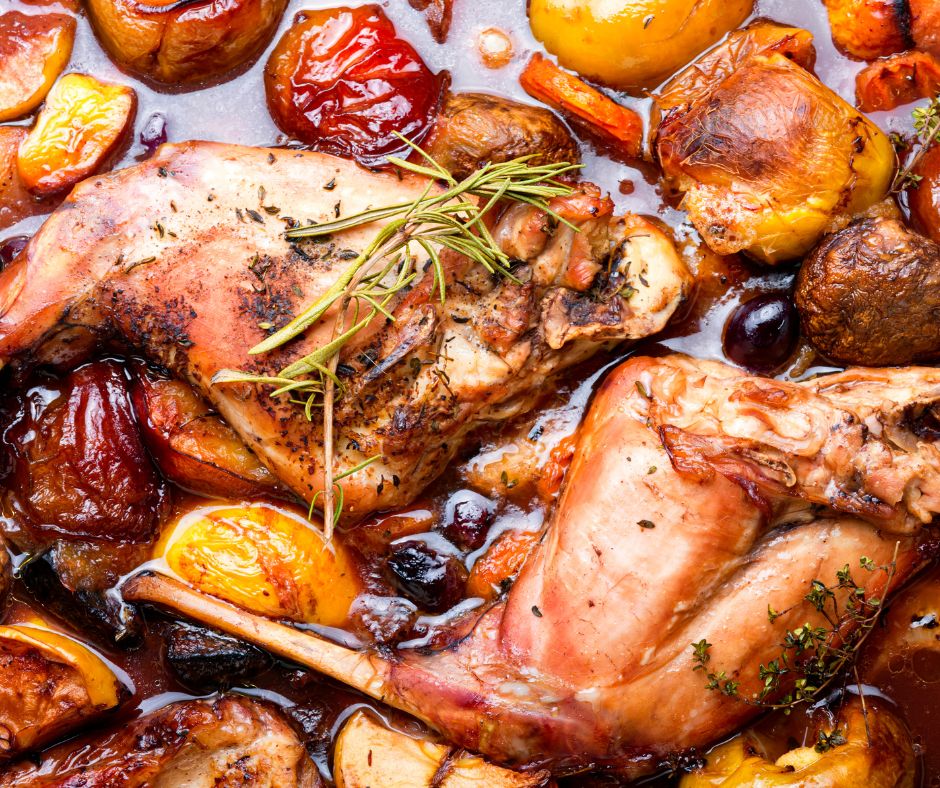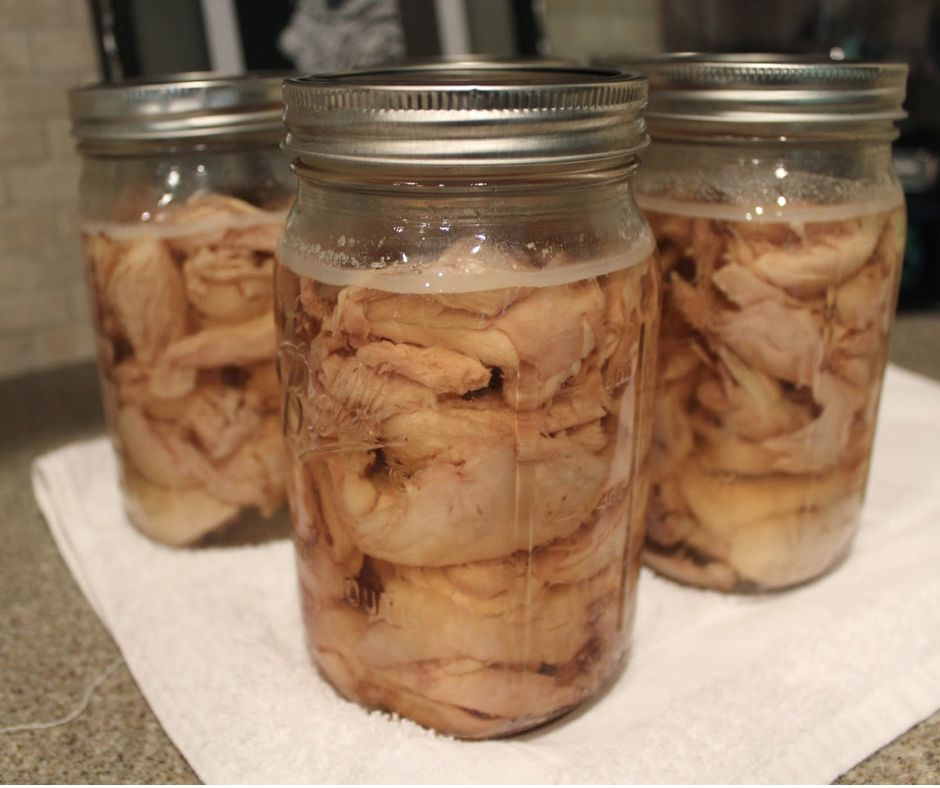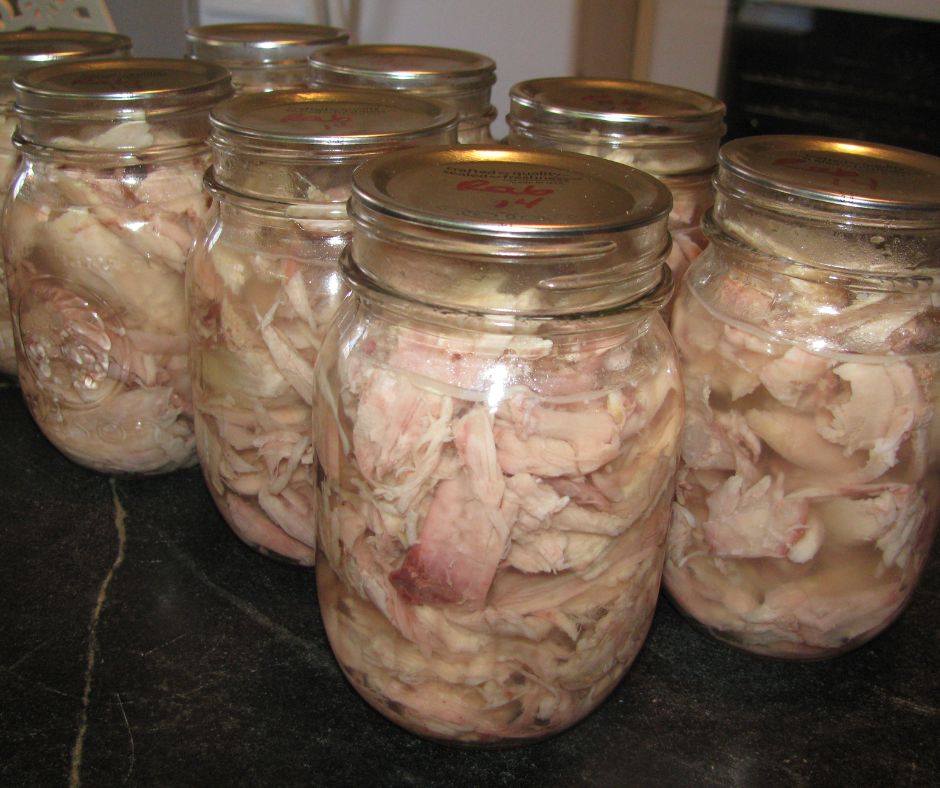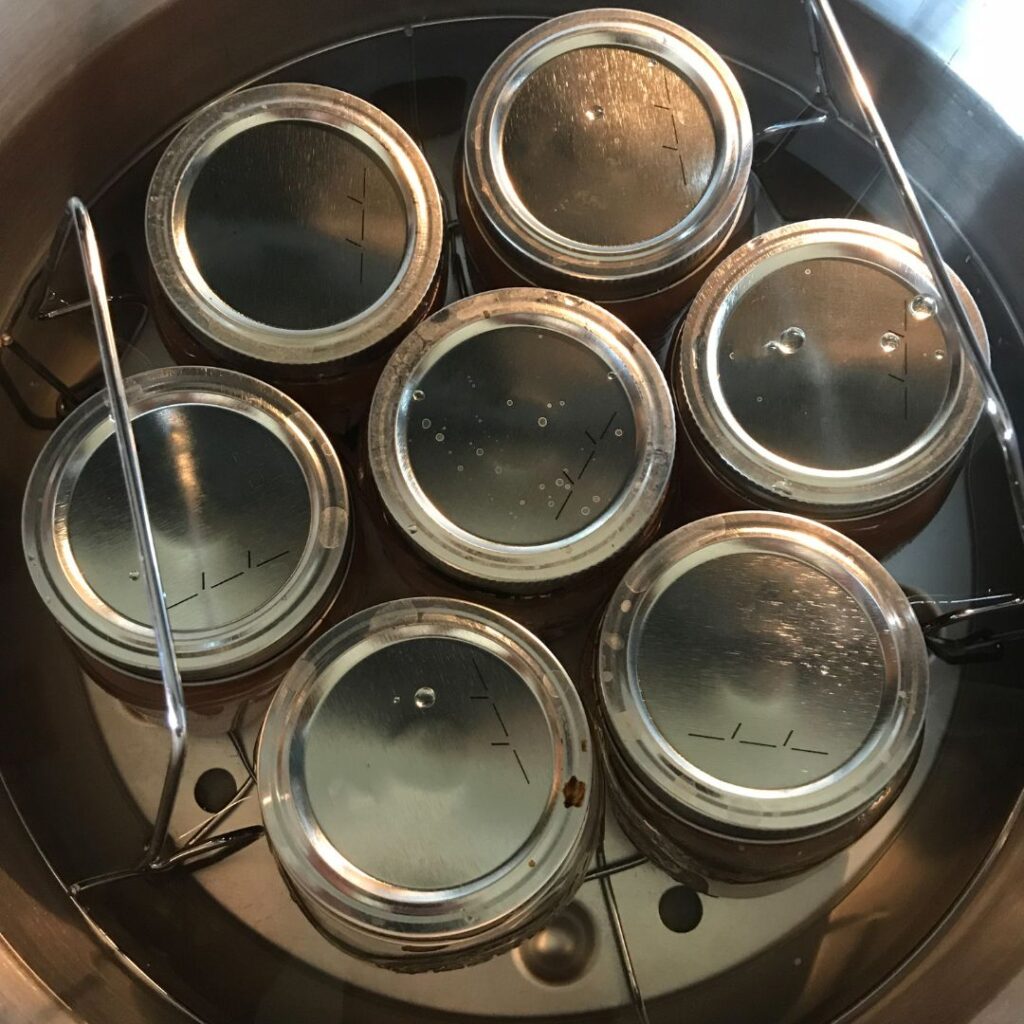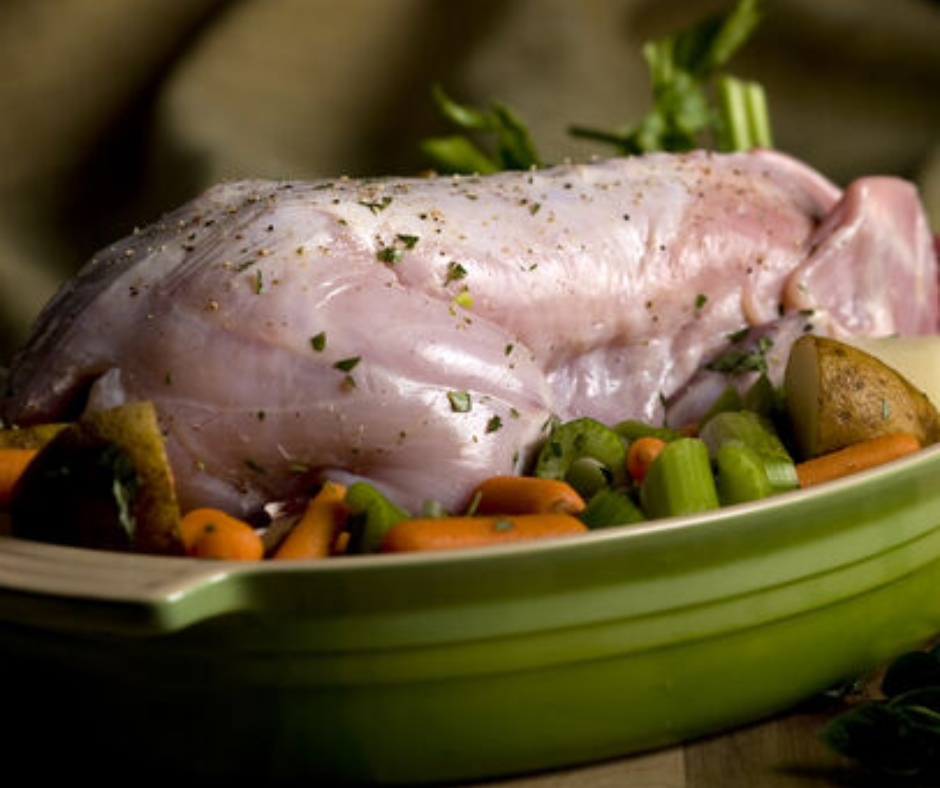For those looking to add a sustainable and versatile protein to their diet, rabbit meat is an excellent option. Many online retailers offer high-quality rabbit meat, including D’Artagnan, where you can find everything from rabbit legs to rabbit sausage. D’Artagnan’s selection starts at $54.99, catering to various culinary needs.
 Another great option is Blue Ridge Rabbit Meat Co., providing meat processed and packaged right on their farm in Wellford, SC. Their procedures and facilities are FDA-approved and inspected by the South Carolina Department of Agriculture, ensuring top-notch quality and safety.
For those following specific diets like Atkins, Keto, or Paleo, Valley Rabbits delivers premium rabbit meat suitable for these dietary needs. They offer a range of products including fryers, saddles, and legs, making it easy to incorporate this lean protein into your meals.
Another great option is Blue Ridge Rabbit Meat Co., providing meat processed and packaged right on their farm in Wellford, SC. Their procedures and facilities are FDA-approved and inspected by the South Carolina Department of Agriculture, ensuring top-notch quality and safety.
For those following specific diets like Atkins, Keto, or Paleo, Valley Rabbits delivers premium rabbit meat suitable for these dietary needs. They offer a range of products including fryers, saddles, and legs, making it easy to incorporate this lean protein into your meals.
 Rabbit meat is a lean and healthy alternative to traditional meats like beef and pork. It is high in protein, low in fat, and offers several health benefits. Let’s take a closer look at its health benefits, nutritional profile, and comparison with other meats.
Rabbit meat is a lean and healthy alternative to traditional meats like beef and pork. It is high in protein, low in fat, and offers several health benefits. Let’s take a closer look at its health benefits, nutritional profile, and comparison with other meats.
 Whether you’re looking to order rabbit meat online or find it in local markets or grocery stores, there are many options available. You can even explore specialty suppliers for unique cuts and quality offerings.
Whether you’re looking to order rabbit meat online or find it in local markets or grocery stores, there are many options available. You can even explore specialty suppliers for unique cuts and quality offerings.
 Rabbit meat is versatile and can be prepared in numerous ways, making it a great choice for a variety of meals. Whether you prefer braising, roasting, or frying, the right techniques can enhance its flavor and texture.
Rabbit meat is versatile and can be prepared in numerous ways, making it a great choice for a variety of meals. Whether you prefer braising, roasting, or frying, the right techniques can enhance its flavor and texture.
 Rabbit meat is a versatile protein used in various culinary dishes, often featured in restaurants and celebrated for its fusion within different cultural cuisines. Its use spans gourmet dining to traditional comfort foods.
Rabbit meat is a versatile protein used in various culinary dishes, often featured in restaurants and celebrated for its fusion within different cultural cuisines. Its use spans gourmet dining to traditional comfort foods.
 Rabbit meat stands out for its low environmental impact and sustainable benefits, making it an excellent choice for environmentally conscious consumers. This section covers the specific environmental advantages and how rabbit meat compares to other meats in terms of sustainability.
Rabbit meat stands out for its low environmental impact and sustainable benefits, making it an excellent choice for environmentally conscious consumers. This section covers the specific environmental advantages and how rabbit meat compares to other meats in terms of sustainability.
 When buying rabbit meat, it’s important to know the different cuts available and how they are typically used. This helps in selecting the right parts for your intended dish and ensures the best results.
When buying rabbit meat, it’s important to know the different cuts available and how they are typically used. This helps in selecting the right parts for your intended dish and ensures the best results.
 Proper storage and handling are crucial to maintain the quality and safety of rabbit meat. This helps prevent contamination and extends shelf life.
Proper storage and handling are crucial to maintain the quality and safety of rabbit meat. This helps prevent contamination and extends shelf life.
 Another great option is Blue Ridge Rabbit Meat Co., providing meat processed and packaged right on their farm in Wellford, SC. Their procedures and facilities are FDA-approved and inspected by the South Carolina Department of Agriculture, ensuring top-notch quality and safety.
For those following specific diets like Atkins, Keto, or Paleo, Valley Rabbits delivers premium rabbit meat suitable for these dietary needs. They offer a range of products including fryers, saddles, and legs, making it easy to incorporate this lean protein into your meals.
Another great option is Blue Ridge Rabbit Meat Co., providing meat processed and packaged right on their farm in Wellford, SC. Their procedures and facilities are FDA-approved and inspected by the South Carolina Department of Agriculture, ensuring top-notch quality and safety.
For those following specific diets like Atkins, Keto, or Paleo, Valley Rabbits delivers premium rabbit meat suitable for these dietary needs. They offer a range of products including fryers, saddles, and legs, making it easy to incorporate this lean protein into your meals.
Understanding Rabbit Meat
 Rabbit meat is a lean and healthy alternative to traditional meats like beef and pork. It is high in protein, low in fat, and offers several health benefits. Let’s take a closer look at its health benefits, nutritional profile, and comparison with other meats.
Rabbit meat is a lean and healthy alternative to traditional meats like beef and pork. It is high in protein, low in fat, and offers several health benefits. Let’s take a closer look at its health benefits, nutritional profile, and comparison with other meats.
Health Benefits
Rabbit meat is beneficial for those looking to maintain a healthy diet. It is low in cholesterol, reducing the risk of heart disease. This meat is also rich in vitamins B12 and E, which are essential for red blood cell formation and protecting cells from damage. Another benefit is its high level of essential amino acids. These are crucial for tissue repair and growth. Rabbit meat is also easy to digest, making it suitable for individuals with digestive issues or sensitivities.Nutritional Profile
Rabbit Saddle contains a significant amount of protein, which is vital for muscle building and repair. It has around 22 grams of protein per 100 grams serving. This meat is low in fat, typically having only 3-4 grams of fat per 100 grams. It is also a good source of minerals like iron and phosphorus. Iron is essential for transporting oxygen in the blood, while phosphorus plays a role in bone health. The meat’s low sodium content makes it a good choice for those managing their blood pressure.Rabbit Meat vs Other Meats
When comparing Boneless Rabbit Meat to other meats, it stands out for being leaner than beef, pork, and even chicken. Beef and pork have higher fat content and calories, which can contribute to weight gain and health issues if consumed in excess. Rabbit meat has less cholesterol than beef and pork, making it a healthier option for those worried about cholesterol levels. Additionally, it is often considered more sustainable as rabbits consume less feed and water compared to larger livestock, reducing their environmental footprint.Sourcing Quality Rabbit Meat
To ensure you’re getting the highest quality rabbit meat, focus on the farming practices and certifications that guarantee humane and sustainable methods.Farming Practices
When looking for quality rabbit meat, it’s crucial to understand the farming practices used by the suppliers. Prioritize farms that use sustainable farming practices. These methods minimize environmental impact and promote animal welfare. Free-range farming allows rabbits to roam freely, which ensures they live in a more natural and humane environment. Family farms often provide the best care for their animals, as they are more likely to adhere to traditional and sustainable practices. It’s important to choose meat from farms that do not use hormones, antibiotics, or additives. This guarantees that the meat is healthier and free from potentially harmful substances.Certifications and Standards
Certifications are a key indicator of quality and humane practices. Look for meats that have labels from reputable organizations. Certifications like Certified Humane and Animal Welfare Approved indicate that the rabbits were raised under strict humane conditions. Standards such as organic certification ensure that the meat is free from synthetic additives and was produced using eco-friendly methods. These labels help consumers make informed decisions about the quality and sustainability of the rabbit meat they buy. By choosing rabbit meat from certified sources, you are ensuring that the meat meets high standards for safety, quality, and ethical treatment of animals.Purchasing Options
 Whether you’re looking to order rabbit meat online or find it in local markets or grocery stores, there are many options available. You can even explore specialty suppliers for unique cuts and quality offerings.
Whether you’re looking to order rabbit meat online or find it in local markets or grocery stores, there are many options available. You can even explore specialty suppliers for unique cuts and quality offerings.
Buying Online
Purchasing rabbit meat online offers convenience and access to a variety of cuts. Websites like Fossil Farms provide options such as whole rabbits, boneless loin, and legs. D’Artagnan also offers different cuts including rabbit saddles and legs. Online vendors often provide detailed descriptions and preparation tips, making it easier to choose the right product. Additionally, ordering online can ensure that you receive fresh or frozen meat delivered directly to your door.Local Markets
Local markets are a great place to find fresh rabbit meat if you prefer buying in person. Farmers’ markets often have vendors who raise rabbits sustainably, providing you with high-quality meat. These markets allow you to speak directly with the farmers, which can be beneficial if you have questions about the meat or its origin. Checking local listings or market schedules can help you find where rabbit meat is sold nearby.Grocery Stores
Some grocery stores carry rabbit meat, especially those that specialize in gourmet or organic foods. Stores like Whole Foods might have rabbit meat in their meat department. It’s important to check with your local store since availability can vary. Look in the frozen section if you don’t see it fresh. Inquiring with the store’s butchers can sometimes lead to special orders or getting notified when rabbit meat is in stock.Specialty Suppliers
Specialty suppliers often focus on providing high-quality and unique meat products. US Wellness Meats and other high-end suppliers may offer rabbit meat raised in specific conditions, like free-range or organic. These suppliers might offer harder-to-find cuts or prepared items like rabbit sausages. They often have a strong focus on animal welfare and quality, which can be appealing if you are particular about sourcing. Ordering from specialty suppliers can ensure you get premium quality meat not always available in typical markets or grocery stores.Preparing Rabbit Meat
 Rabbit meat is versatile and can be prepared in numerous ways, making it a great choice for a variety of meals. Whether you prefer braising, roasting, or frying, the right techniques can enhance its flavor and texture.
Rabbit meat is versatile and can be prepared in numerous ways, making it a great choice for a variety of meals. Whether you prefer braising, roasting, or frying, the right techniques can enhance its flavor and texture.
Cooking Techniques
One popular method for cooking rabbit is braising, which involves searing the meat and then slow-cooking it in a small amount of liquid. This technique ensures tender results and is ideal for rabbit legs and saddles. Roasting is another option. To roast, season with salt, pepper, and herbs. Bake in an oven at 350°F (175°C) for about 45-60 minutes until the internal temperature hits 160°F (70°C), with the meat consistently tender and flavorful. Frying is great for creating crispy rabbit dishes. To fry, cut the meat into smaller pieces, coat them in seasoned flour, and cook in hot oil until golden brown. This method is quick and can yield delightful textures.Suggested Recipes
Braised Rabbit Stew: Brown the rabbit legs in a skillet, add broth and vegetables, and simmer for 2-3 hours until tender. This hearty dish is perfect for a cozy dinner. Roasted Rabbit with Herbs: Place seasoned rabbit meat on a roasting pan, cook until it reaches the appropriate internal temperature, and serve with roasted vegetables or mashed potatoes. This recipe is straightforward and brings out the meat’s natural flavors. Fried Rabbit: Slice the meat, season, and coat with flour before frying. Serve with a fresh salad or fries for a delightful meal. This approach is easy to cook and perfect for beginners.Wine Pairing
When it comes to pairing rabbit dishes with wine, white wines tend to complement the meat’s delicate flavor. For instance, a crisp Chardonnay enhances the flavors of a braised rabbit stew, while a Sauvignon Blanc pairs well with roasted rabbit. For fried rabbit, a light Pinot Grigio can balance the richness of the dish, offering a refreshing contrast. These wine choices help to elevate the dining experience, making each meal special.Rabbit Meat in Culinary Settings
 Rabbit meat is a versatile protein used in various culinary dishes, often featured in restaurants and celebrated for its fusion within different cultural cuisines. Its use spans gourmet dining to traditional comfort foods.
Rabbit meat is a versatile protein used in various culinary dishes, often featured in restaurants and celebrated for its fusion within different cultural cuisines. Its use spans gourmet dining to traditional comfort foods.
Restaurant Offerings
Restaurants are increasingly featuring rabbit meat on their menus. This game meat is high in protein and low in fat, making it a popular choice for health-conscious diners. French cuisine highlights dishes like rabbit stew and rabbit pâté. These dishes often use braising or slow-cooking methods to enhance flavor. Fine dining establishments may serve rabbit as part of a tasting menu. Presentation often includes rich sauces and complementary vegetables. Casual eateries might offer simpler preparations, such as roasted rabbit with herbs. Chefs appreciate rabbit for its tenderness and mild flavor. It pairs well with a variety of herbs and spices. Sauce pairings, like a mustard cream sauce, can bring out its subtle taste. Seasonal and regional ingredients often complement rabbit dishes on local menus.Fusion of Cultures
Rabbit meat seamlessly integrates into diverse culinary traditions. In Italian cuisine, it can be found in dishes like rabbit ragu, served with pasta. Spanish tapas may include small, savory rabbit bites. Asian fusion dishes might feature rabbit in unique ways. For instance, rabbit can replace chicken in stir-fries or curries. Mexican cuisine sometimes includes rabbit in traditional stews like “conejo en mole,” combining rich flavors and spices. The adaptability of rabbit meat makes it a favorite for chefs experimenting with cross-cultural recipes. Its mild taste absorbs the flavors and seasonings of various cuisines, allowing for creative culinary expressions.Environmental Impact
 Rabbit meat stands out for its low environmental impact and sustainable benefits, making it an excellent choice for environmentally conscious consumers. This section covers the specific environmental advantages and how rabbit meat compares to other meats in terms of sustainability.
Rabbit meat stands out for its low environmental impact and sustainable benefits, making it an excellent choice for environmentally conscious consumers. This section covers the specific environmental advantages and how rabbit meat compares to other meats in terms of sustainability.
Sustainable Benefits
Raising rabbits offers several sustainable benefits. Rabbits are small herbivores that consume less feed and water than larger livestock animals like cows or pigs. This makes their production more environmentally friendly. Additionally, rabbits reproduce quickly, providing a steady and reliable source of meat. Another important factor is the manure produced by rabbits, which can be used as a rich natural fertilizer. This reduces the need for chemical fertilizers, further decreasing the environmental footprint. Moreover, their efficient feed-to-meat conversion means less land is required for grazing and feed production. Rabbit meat is also considered environmentally friendly meat due to its low greenhouse gas emissions. Compared to other livestock, rabbits generate lower levels of methane and other harmful gases, contributing to a reduction in overall carbon footprint.Comparisons with Other Meats
When comparing rabbit meat with other meats, rabbit emerges as a notably sustainable meat. According to the Real Food Encyclopedia, rabbit meat has higher protein and lower fat content compared to beef, pork, and chicken. It also contains fewer calories, positioning it as a healthier option with a smaller environmental burden. Cattle ranching, for example, is known for its significant environmental impact due to high water usage and methane emissions. In contrast, rabbits require minimal resources and produce less waste. Moreover, studies highlighted in NCBI show that when the live weight of rabbits increases, the environmental impact does not significantly rise. This efficiency in feed conversion and meat production ensures that rabbit farming remains a low-impact agricultural practice. Given these comparisons, rabbit meat presents a compelling case for those seeking to minimize their environmental footprint while enjoying a nutritious and sustainable protein source.Selecting Cuts and Portions
 When buying rabbit meat, it’s important to know the different cuts available and how they are typically used. This helps in selecting the right parts for your intended dish and ensures the best results.
When buying rabbit meat, it’s important to know the different cuts available and how they are typically used. This helps in selecting the right parts for your intended dish and ensures the best results.
Different Cuts Explained
Front Legs: The front legs are lean and tender, making them perfect for stewing. They cook well when browned and then simmered in broth for several hours. This cut is often preferred for dishes where the meat needs to be succulent and flavorful. Loins: Loins are one of the tenderest parts of the rabbit. They are great for quick cooking methods like grilling or pan-frying. Loins are usually more expensive than other cuts due to their tenderness. Whole Rabbit: Buying a whole rabbit often provides the best value. A whole fryer rabbit includes both the loins and legs, making it versatile for different recipes. It can be cut into portions or cooked whole, depending on the dish. Hind Legs: The hind legs are meatier compared to the front legs and can be roasted or braised. They are suitable for recipes that require lengthy cooking to achieve tenderness. Hind legs serve well in hearty, savory dishes. Understanding these cuts helps in preparing meals with the right texture and flavor, offering various culinary options from tender loins to savory stews.Rabbit Meat Storage and Safety
 Proper storage and handling are crucial to maintain the quality and safety of rabbit meat. This helps prevent contamination and extends shelf life.
Proper storage and handling are crucial to maintain the quality and safety of rabbit meat. This helps prevent contamination and extends shelf life.
Freezing and Thawing
For long-term storage, rabbit meat should be frozen at 0°F (-18°C). It can be stored this way for up to a year. Freezing helps retain the meat’s freshness and prevents spoilage. When thawing, always do so in the refrigerator or in cold water. Avoid thawing on the countertop, as this can lead to bacterial growth. Key Points to Remember:- Freeze at 0°F (-18°C)
- Store for up to one year
- Thaw in the refrigerator or cold water
Handling and Preservation
Proper handling and storage temperatures are essential to prevent contamination. Fresh rabbit meat should be kept between 32°F and 36°F (0°C and 2°C), which slows down bacterial growth. Use separate cutting boards and utensils to avoid cross-contamination. Here are some important tips:- Store at 32°F – 36°F (0°C – 2°C)
- Avoid cross-contamination
- Use different tools for raw meat
Frequently Asked Questions
When looking for rabbit meat, it helps to know the best sources online, specific butchers, local farms, and supermarkets that sell it. There are also considerations for quality and availability.What are the best sources for purchasing rabbit meat online?
Rabbit meat can be found on websites specializing in exotic or gourmet meats. Some trusted sites to consider include Chef’s Resource and specialized farms’ online stores.Are there specific butchers that offer rabbit meat for sale?
Yes, many specialty butchers offer rabbit meat. It’s best to call ahead to confirm availability. Butchers focusing on organic or exotic meats tend to have rabbit meat more frequently.How can I locate a local farm that sells fresh rabbit meat?
Local farms often sell fresh rabbit meat. Visiting farmer’s markets or checking online directories for local meat suppliers can help locate these farms. Websites such as Penryn Rabbit Farm have useful information on this topic.Which supermarkets in the U.S. are known to carry rabbit meat?
Some supermarkets, particularly those with a strong gourmet or exotic meat section, may carry rabbit meat. Stores like Whole Foods Market sometimes offer it, though availability can vary by location.Is rabbit meat widely available at grocery stores, and if not, why?
Rabbit meat is not widely available at most grocery stores due to lower consumer demand and higher costs associated with raising rabbits. More specialty and gourmet markets are likely to carry it.What should I consider when looking for high-quality rabbit meat?
When looking for high-quality rabbit meat, consider the source’s reputation, the meat’s color and texture, and how the rabbits were raised. Opt for meat from free-range or organic sources when possible for the best quality.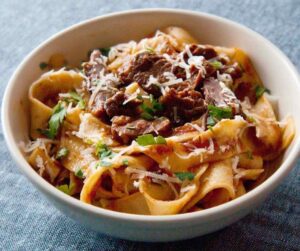
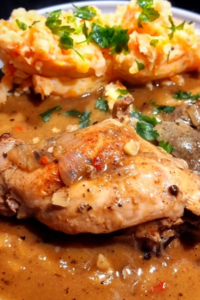
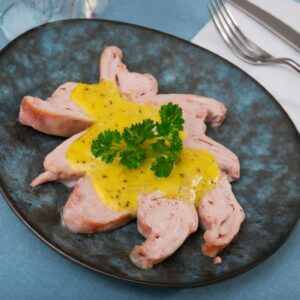
Herb-Crusted Sous Vide Rabbit Loin with Lemon Dijon Sauce: A Restaurant-Worthy Meal at Home
June 4, 2024
No Comments
Read More »
